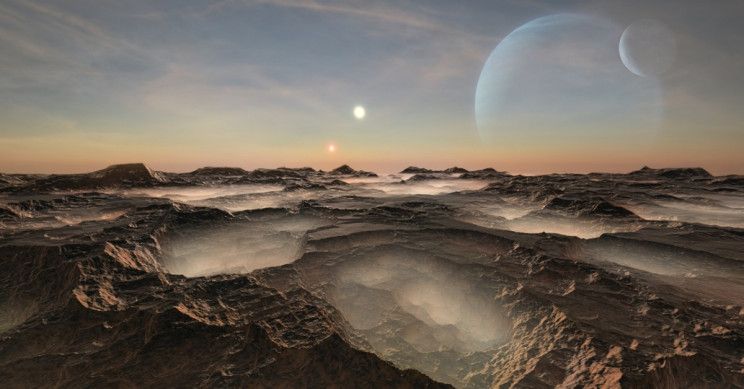Solar One: The First Manned Interstellar Spaceship
April 29, 2020 (spacedaily.com)
• In a new paper (see here), astronomer Alberto Caballero presents the concept and design of a light-sail propelled by a laser propulsion system that could reach 30% the speed of light and reach the Alpha Centauri star system in 15 years. A small nuclear fission reactor would provide the needed electicity. Caballero says that the 2-crew spacecraft, called ‘Solar One’, could become the first manned interstellar spaceship by the late-20s.
• The human-crewed spaceship would integrate the LANL Mega Power Reactor, a larger version of NASA’ Sunjammer light sail, and an updated version of the HELLADS laser system, all of which are existing or ‘near-term’ technologies. The LANL (Los Alamos National Laboratory) Mega Power Reactor is a 35 ton fission reactor able to produce continuous power for 12 years. The 38m x 38m Sunjammer light sail is proposed by NASA. And the HELLADS (High Energy Liquid Laser Area Defense System) is a ground-based laser weapon system operated by DARPA. It would all be launched with SpaceX’s Big Falcon Rocket. The total cost of Solar One spacecraft would be in the $100 million range.
• Solar One’s large sail would produce an incredible force resulting in a constant acceleration and deceleration during the trip. “The key aspect of this idea resides in the extremely large size of the light sail” – says Caballero. When the spaceship is neither accelerating nor decelerating, the light sail would be rolled up to reduce possible damage by asteroids. The module containing the nuclear micro-reactor would have a protective coating thicker than the rest of the spaceship to protect it from micro-asteroid impacts. But in case of nuclear failure, the chances to survive would be minimal.
• Once the destination is reached, the crew could orbit the exoplanet, take images and send a robot to the surface. If the air is breathable, the crew could choose to land and personally explore the exoplanet.
In a new paper, astronomer Alberto Caballero presents the concept and design of a beam-powered propulsion system that could become the first manned interstellar spaceship by the late-20s.
Solar One, the name he gives to the spaceship, could reach 30% the speed of light, reaching Alpha Centauri system in 15 years.

Alberto argues that, despite light-sail spacecrafts such as the so-called Starships from the Starshot project have already been designed, they might not be the best option to explore exoplanets in detail.
The new type of spaceship would have a light-sail propelled by a laser system, which would receive the necessary electricity from a small nuclear fission reactor.
The Concept
Solar One is a proposed human-crewed spaceship that would integrate three existing or near-term technologies: the LANL Mega Power Reactor, a larger version of NASA’ Sunjammer light sail, and an updated version of the HELLADS laser system.
Firstly, the LANL (Los Alamos National Laboratory) Mega Power Reactor is a fission reactor that weighs 35 tons. It is able to produce up to 10 MW, or the equivalent of 2 MW of continuous power for 12 years.
Secondly, the Sunjammer light sail is a proposed NASA sail with a size of 38 x 38 m (1,444 m2).
Thirdly, HELLADS (High Energy Liquid Laser Area Defense System) is a ground-based laser weapon system demonstrator operated by DARPA, with a goal of 5 kg per KW by 2023.
The idea behind Solar One is to combine these three projects. A 2-crew spaceship with a total mass of 91 tons would be powered by a mile-long light sail in order to achieve the speed of 0.3c.
The large sail would produce an incredible force of more than 170,000 newtons, resulting in a constant acceleration and deceleration of 0.18g during the first and last one year and a half of the trip.
“The key aspect of this idea resides in the extremely large size of the light sail” – says Alberto.
FAIR USE NOTICE: This page contains copyrighted material the use of which has not been specifically authorized by the copyright owner. ExoNews.org distributes this material for the purpose of news reporting, educational research, comment and criticism, constituting Fair Use under 17 U.S.C § 107. Please contact the Editor at ExoNews with any copyright issue.


